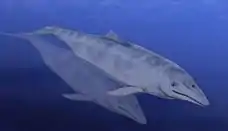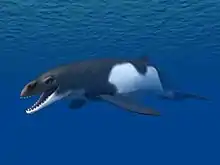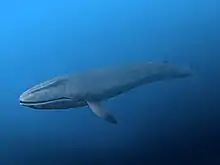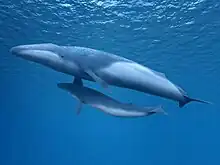| Ciuciulea davidi Temporal range: | |
|---|---|
 | |
| Skull of Ciuciulea davidi Gol'din, 2018, dorsal side | |
| Scientific classification | |
| Domain: | Eukaryota |
| Kingdom: | Animalia |
| Phylum: | Chordata |
| Class: | Mammalia |
| Order: | Artiodactyla |
| Infraorder: | Cetacea |
| Family: | Cetotheriidae |
| Genus: | †Ciuciulea Gol'din, 2018 |
| Species | |
|
†Ciuciulea davidi Gol'din, 2018 (type) | |
Ciuciulea is a genus of cetotheriid mysticete found in middle Miocene marine deposits in Moldova.
Description
Ciuciulea is a dwarf cetotheriid 3–4 meters in length. It comes from the Badenian deposits (13.8-12.7 Ma) of the Central Paratethys, and this is the earliest world record of the family Cetotheriidae. It differs from the other Cetotheriidae in the presence of a narrow occipital shield, which is as long as wide, and a pars cochlearis of the periotic bone bulging out ventral to fenestra rotunda. Primitive characters include the premaxillae forming a transverse line with the posterior ends of nasals and maxillae rather than constricted or overridden by ascending processes of maxillae.[1]
Biology
Ciuciulea lived in shallow marine waters in present-day Moldova, earlier than true seals Pontophoca, Sarmatonectes, Histriophoca, Monachopsis, Cryptophoca, and Praepusa, the putative kentriodontid Sarmatodelphis, and the problematic odontocetes Pachypleurus, Phocaena euxinica, and Delphinus bessarabicus.
References
- ↑ Gol'din P. (2018) New Paratethyan dwarf baleen whales mark the origin of cetotheres. PeerJ 6:e5800 https://doi.org/10.7717/peerj.5800



